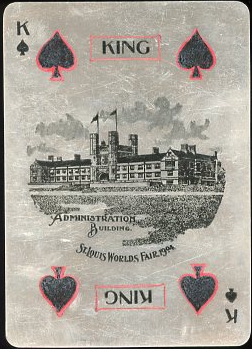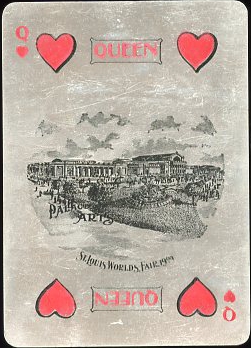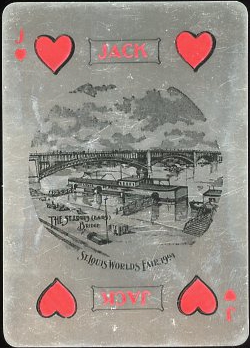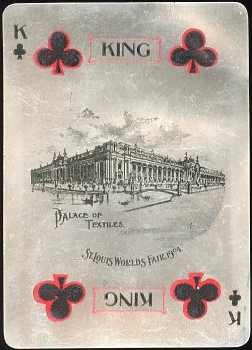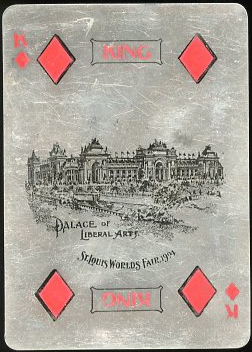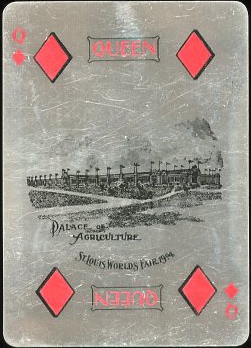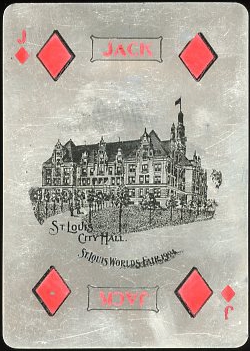October
2020
 |
This
month was a busy one and most activities were playing card related. I've
been busy creating a deck of cards in cooperation with a Dutch artist
and getting it ready for the printer. If all goes well, the deck will be
launched on November 22. It will be a limited, numbered and artist
signed edition of 250 decks.
The virtual convention of the 52+Joker was a nice interruption. Saw some
really good presentations and the online auctions worked well too,
so..... "chapeau" for Lee Ascher ánd his staff.
I went out a few times to pick up decks that I had bought on the Dutch
auction site and a few decks arrived in the mail. A nice mailbox
surprise was the latest Elaine Lewis transformation deck, called
"Once Upon A Time", # 21/50 and accompanied by a personal X-mas
card from E.L.
But I was even more surprised by the UPS. They managed to get a US
package delivered here.... in 4 days!! And the content (a win in the 52+
auction) solved my problem (two E.L. decks in a row as Deck of the Month?) in one stroke. |
|
We had
already gathered cards made of papyrus, special Nepalese paper, leather
and celluloid, but this is the first aluminum deck. It's a souvenir deck
of the 1904 World Fair in St. Louis. Each card shows a different
building on the fair's site, so don't forget to click the aces to see
the pip cards. But the back design raised the first question. Thomas
Jefferson was quite dead in 1904, so what is his face doing on the backs?
|
Thomas
Jefferson (1743-1826) was one of the Founding Fathers and he is seen as the
spiritual father of the United States. He was the principal author of the
Declaration of Independence, ratified on July 4, 1776. In itself good reasons to
portray him on the backs, but his Virginia was only one of the thirteen states
that signed the proclamation and there were other authors of the declaration
too. So why the choice for his portrait? For the answer it is useful to know
that the official name for the St. Louis World Fair was the Louisiana Purchase
Exposition, which was initially to be organized in St. Louis to celebrate the centennial of
the Louisiana Purchase in 1803. It was the most important land purchase in the
history of the USA, as it comprised more than just the present Louisiana. A
territory from New Orleans in the South up to the Canadian territories in the
North was acquired from the French. And guess who was responsible for this
purchase?
The
opening of the actual fair was delayed until April 30, 1904. Officially because
the organizers wanted to allow foreign nations and other US states to
participate. In the end about 50 foreign nations and 43 of the then 45 states
have participated. The fair was attended by close to 20 million visitors.
It's not
a happy marriage, between aluminum and a scanner.
The scanner seems to detect any 0.01 mm height difference and is merciless on
slight scratches.
But as it's my scanner.........my apologies for the quality.
In real they look much nicer: flat, same tone and less visible scratches.

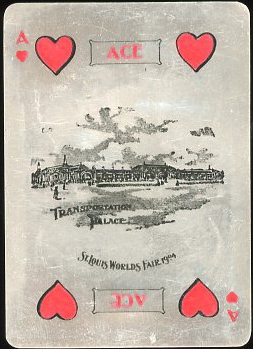
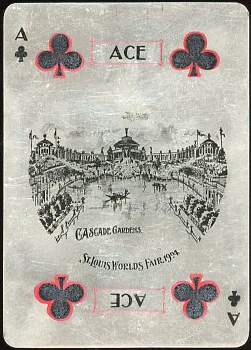

CLICK THE ACES TO SEE
THE PIPS PER SUIT
The deck
consists of
52 cards and a joker.
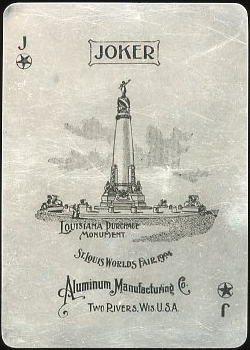
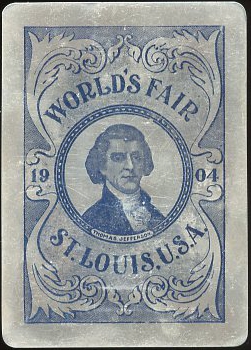
Aluminum
or aluminium?
The deck was produced by the Aluminum Manufacturing Co.
But on the carton outer box it reads aluminium playing cards.
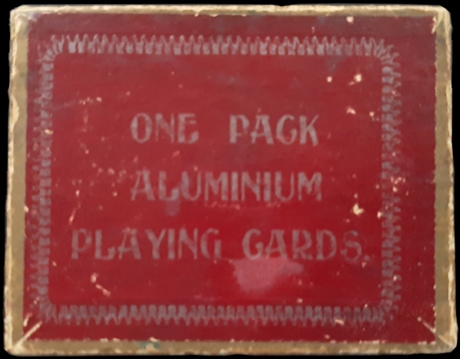
Inside
is an aluminum holder, engraved on both sides.
The flower-like ends of the side strips are solidly fixed to both sides.
The cards have to be taken out through the middle. The holder was probably
closed by a ribbon.
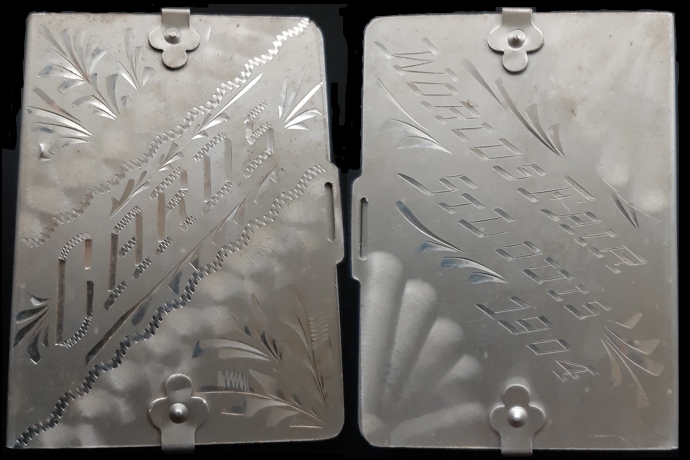
BACK
TO PRESENT MONTH

